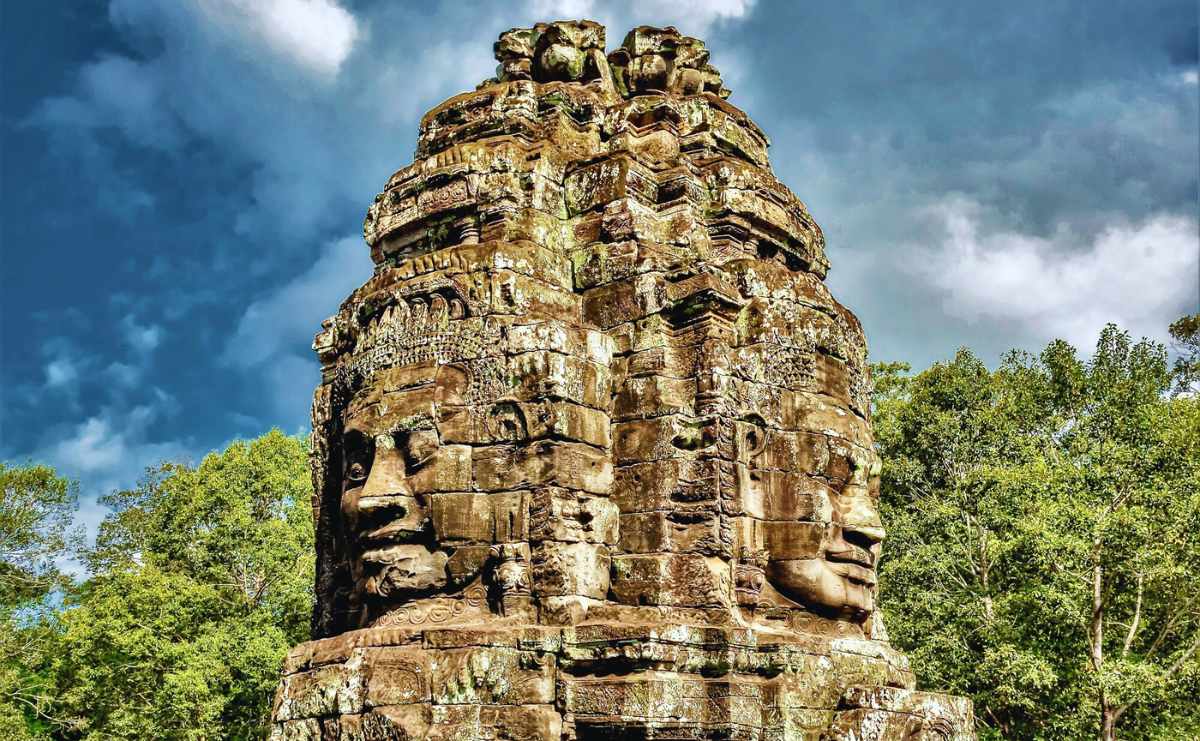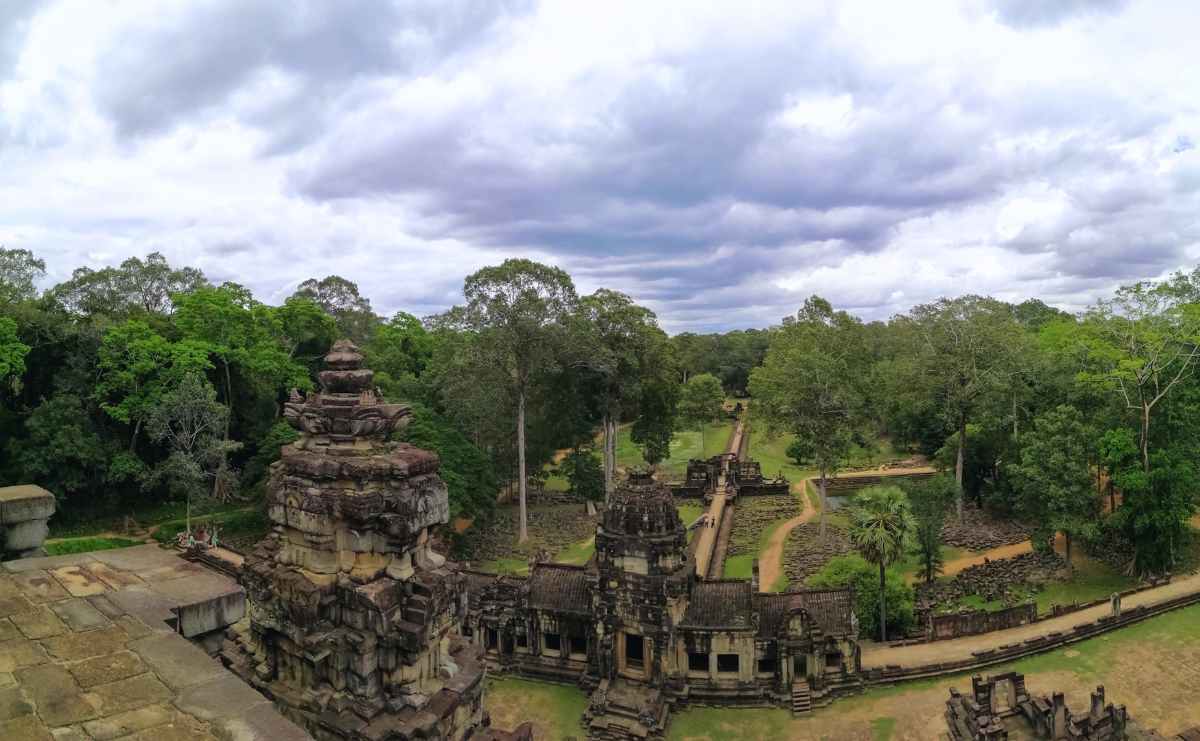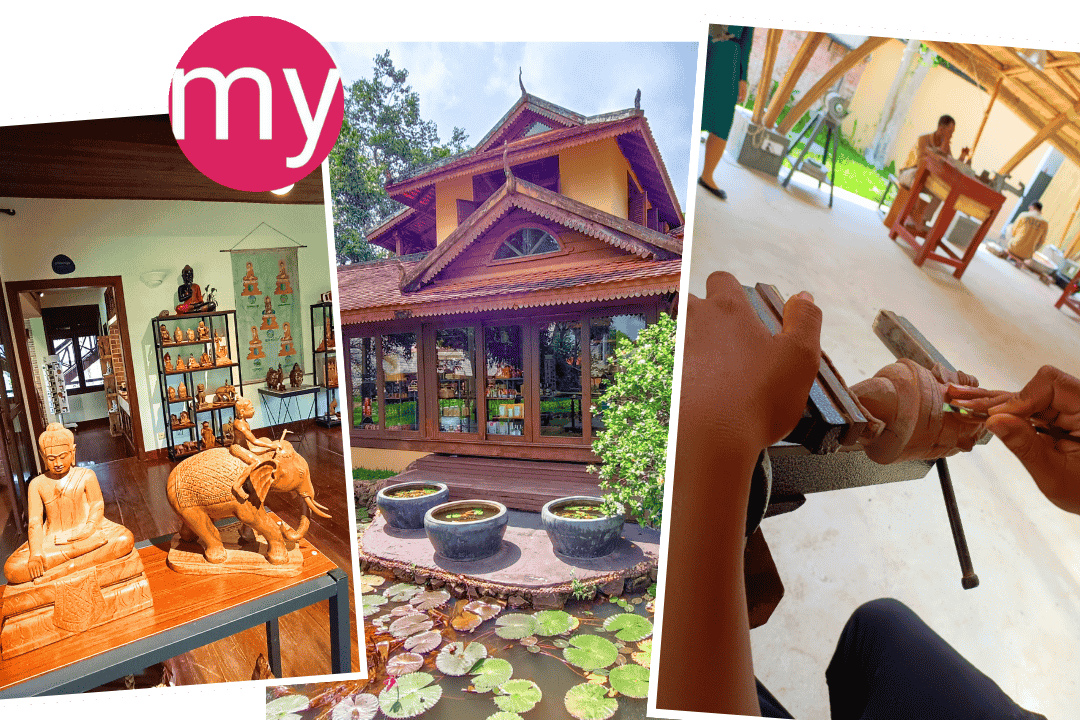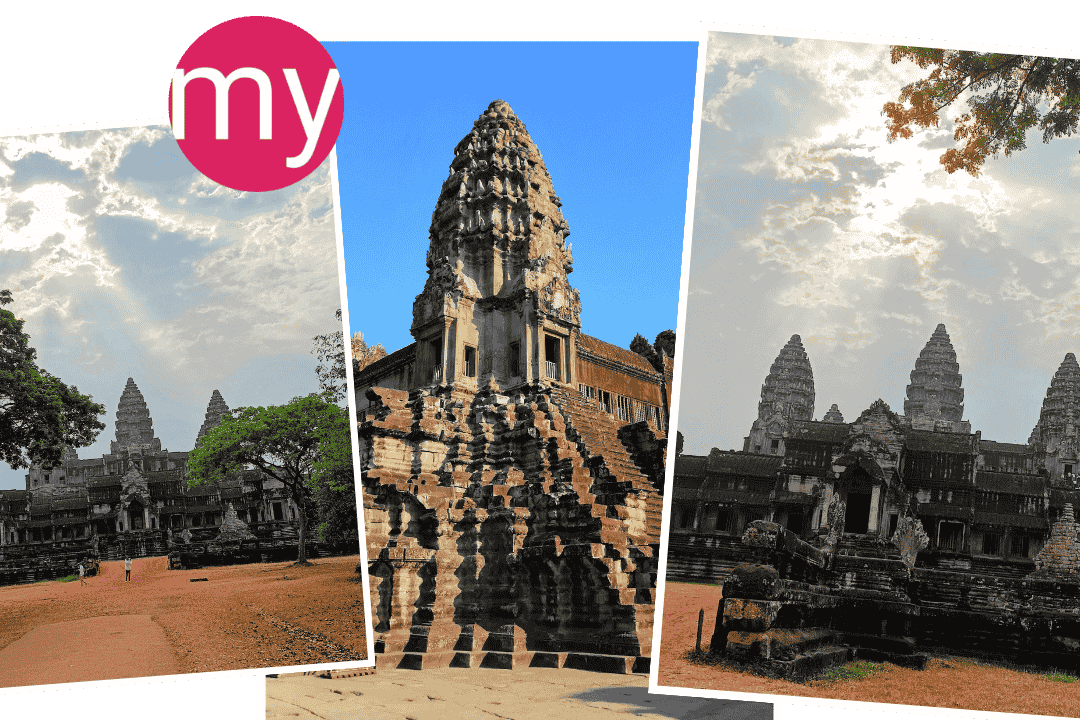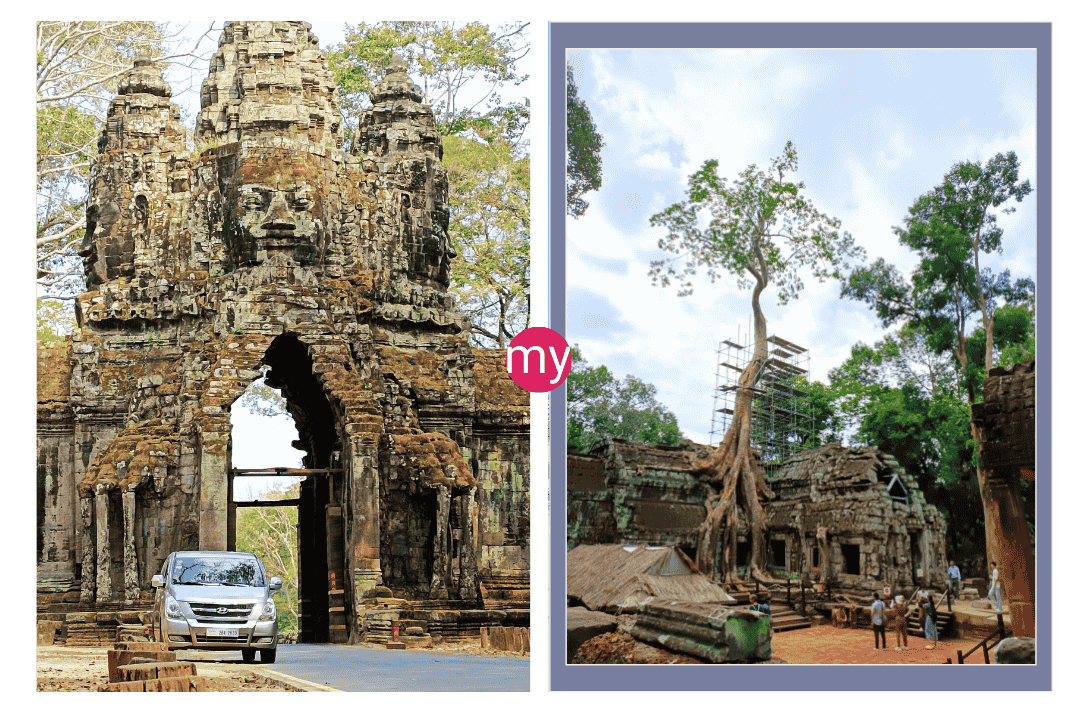
Understanding the Weather in Siem Reap
When to Schedule Your Tour
Embark on a journey to Siem Reap, a city that offers a unique blend of ancient temples, vibrant markets, and diverse weather patterns. This guide provides an in-depth look at Siem Reap’s climate, helping you plan your visit during the season that suits you best.
Understanding the Weather in Siem Reap
Siem Reap’s Meteorological Phenomena
Siem Reap experiences a tropical savanna climate. The wet season begins from May to October and is characterized by heavy rainfall, humidity and heat. The temperature ranges from 25-34 ⁰C. November to February is the dry season, and the temperature averages at 20-28 ⁰C, with steady wind speed. March and April are the hottest months, with temperatures reaching up to 40 ⁰C. The annual average rainfall is 1390mm, which contributes to the beauty of the Angkor temples and surrounding attractions.
To Schedule the Tour
When planning a trip to Siem Reap, schedule the visit according to the weather forecast. November to February is the best time for sightseeing and outdoor activities; however, it may also be crowded and expensive. During the wet season, it rains sporadically and briefly in the afternoon; this can be a pleasant spectacle. However, it may be difficult to explore distant temples and experience muddy roads. March to May is also a favorable season for visiting Siem Reap.
Noteworthy
Although Siem Reap’s weather is tropical, the temperature may decrease in January and December preceding the Chinese New Year, similar to a winter season. This change in temperature is due to Northeast Monsoon winds, which come from the Himalayas and China.
Historical Context
The climate change in the Siem Reap region has significantly affected the livelihood of local communities. For example, the monsoon season sometimes brings heavy rainfall that causes flooding and ruins crops. Organizations like Oxfam and the Rice Field Fisheries, a non-governmental organization supports the local community in adapting to these changes.
Get ready for a weather rollercoaster ride in Siem Reap, where temperatures and humidity can change faster than a New York minute.
Key Takeaways:
- Siem Reap experiences a tropical savanna climate with a wet and dry season.
- The dry season (November to February) is the best time for sightseeing and outdoor activities.
- The wet season (May to October) offers a unique experience with lush greenery and fewer crowds.
- March and April are the hottest months, offering a less crowded experience.
- Weather plays a significant role in planning your visit, affecting outdoor activities and sightseeing opportunities.
Overview of the Climate in Siem Reap
Siem Reap’s Climate: Here’s What You Need to Know.
Siem Reap enjoys a tropical wet & dry climate all year round. It has two seasons: rainy from May to October, and dry from November to April. During the rainy season, temperatures range from 22°C to 34°C, with heavy rain and thunderstorms. The dry season is cooler; daily temps average 24°C to 35°C, with low humidity.
Monsoons bring around 75% of the annual rainfall, helping to make Siem Reap’s agricultural land so fertile. So when you go, take note of the weather and dress accordingly.
Pro Tip: When in Siem Reap, carry an umbrella or raincoat during the rainy season. Downpours often come without warning! So plan your trip for a time when the weather won’t try to melt your face off.
| Season | Features | Benefits |
|---|---|---|
| Dry Season (Nov-Feb) | Temperature: 20-28°C, Low Humidity, Steady Wind Speed | Best for Sightseeing and Outdoor Activities, Less Crowded, Lower Prices |
| Hot Season (Mar-Apr) | Temperature: Up to 40°C | Less Crowded, Lower Prices |
| Wet Season (May-Oct) | Temperature: 25-34°C, High Humidity, Heavy Rainfall | Beautiful Greenery, Less Crowded, Lower Prices |
The Best Time to Visit Siem Reap
November to February is the perfect season to take in Siem Reap’s beauty. Clear skies, pleasant temps and dry weather make it ideal for sightseeing. However, march-April has sudden temperature increases before the monsoon season hits.
May-October is the wet season, bringing unforgettable greenery and a great atmosphere for photogs. Plus, accommodations and travel are cheapest during this time.
National Geographic recommends at least 7 days to appreciate Angkor Wat. Fun fact: Siem Reap means “Defeat of Siam”, referring to the Khmer Empire’s victory in the late 1700s.
Don’t forget the sunscreen! It gets crispy in the dry season.
Dry Season (November to March)
Siem Reap’s dry season runs from Nov-Mar. Sunny skies and temps of 25-30&Celsius; make it famous for its lovely weather. Tourists flock here to explore Angkor Wat’s ancient temples. Little rainfall makes it ideal for outdoor activities like hiking and biking.
Benefits of visiting during the dry season include: amazing photographs against a blue sky, lower prices, and less mud. However, bring sunscreen and hydrate, as the sun can be intense due to lack of cloud cover.
One traveller went trekking through rice paddies and stumbled upon a small village. Friendly locals invited him in for a meal made with fresh ingredients from their crop fields. Siem Reap’s dry season provides cultural immersion in rural areas! Who needs a weather app when you have the shoulder season to spice up vacation plans?
Shoulder Season (April to June, September to October)
Siem Reap’s Shoulder Season, spanning from April to June and September to October, provides mild weather with average temperatures of around 30°C. Humidity is lower than other seasons. Blue skies can be seen juxtaposed with showers that occur later in the day.
The town tends to be less crowded due to fewer seasonal tourists. As a result, temples are much more manageable, making it an optimal time for those who value tranquility. Near October, Bayon temple hosts its annual graffiti exhibition accompanied by a dramatic light show.
Plan your trip on time as you don’t want to miss out on Siem Reap’s Shoulder Season. With the right guidance and a well-planned itinerary, you’ll come back with lasting memories! Pack your swimsuits and an inflatable raft too – during the wet season, the streets turn into rivers and the temples become islands.
Wet Season (July to August)
July to August is the rainy period in Siem Reap. It’s humid and uncomfortable for outdoor activities. Though, there’re unique opportunities to witness lush greenery and lesser crowds. Thunderstorms and flash floods can be expected. So, carry umbrellas and waterproof gear when planning your trip!
The rice fields will be golden before the rains arrive. WWIS states that an average of 2,000 mm rain falls in Siem Reap annually during this season. So don’t let a bit of rain spoil your visit, explore it like Indiana Jones!
Understanding the Effects of Seasonal Weather on Siem Reap Tours
Seasonal weather plays a crucial role in determining the best time for Siem Reap tours. The climate has both a direct and indirect impact on the tour experience. Understanding the effects of the seasonal changes will help in scheduling the tour itinerary wisely. It is necessary to consider the temperature, humidity, rainfall, air quality index, and other factors that affect outdoor activities. Furthermore, the peak tourist season can also influence the prices and availability of accommodations and attractions.
The dry season in Siem Reap runs from November to April. This period is the most favored by tourists as the weather is sunny and pleasant, making it suitable for outdoor activities. However, it is important to note that the months of March and April are the hottest, with temperatures rising up to 40°C. On the other hand, the rainy season from May to October is characterized by high humidity and frequent showers, which can limit outdoor activities. Nevertheless, the monsoon season brings lush greenery and scenic beauty to the temples and surrounding areas.
In addition to the weather, the tour schedule should also consider the tourist traffic and cultural festivals. The peak season from December to February attracts a considerable number of tourists, making it necessary to book accommodations in advance. The Khmer New Year in April and the Bon Om Thook Water Festival in November are popular events attracting a large crowd of visitors.
During my visit to Siem Reap in August, I experienced the beauty of the Angkor temples during the rainy season. The lush greenery and the fewer tourists around made the experience even more serene and memorable. However, the frequent showers and high humidity made it necessary to carry proper rain gear and plan indoor activities as well.
Dry Season Tours
Siem Reap tours during the arid season offer a unique chance to explore Angkor Wat’s ancient temples. Temperatures from 25°C to 35°C, and clear blue skies set against lush vegetation make for a stunning scene. Expect fewer crowds around the tourist sites, plus picture-perfect sunsets.
Walk along dusty paths without getting stuck in mud. Climb stairwells and explore intrepid areas without wet surfaces or slippery hazards. Pack sunscreen and suitable clothing for hot and humid conditions.
The dry season means no competition for space among visitors, plus access to inner temple areas closed off during rainy seasons. Book your visit in advance – temperatures can soar higher in peak months, making direct sunlight uncomfortable for long hours. Get lost in the beauty of Angkor Wat on our Temple Tours!
Temple Tours
Experience Siem Reap tours and explore the ancient temples! Angkor Wat, Bayon, and Ta Prohm – discover their history, architecture, and cultural significance with expert guides.
The weather conditions in Siem Reap are ever-changing, but never too extreme. Once under French colonial rule, these influences have left their mark on the city’s culture. So, grab your raincoat and get ready for an adventure!
Outdoor Activities
When visiting Siem Reap, outdoor enthusiasts have the chance to indulge in nature and explore its sights. Amidst the stunning beauty of rural Cambodia, tourists can find plenty of exciting activities!
- Cycle around the picturesque countryside and ancient temples.
- Go on nature walks with incredible views of greenery, hills and rivers.
- Enjoy the serene waters of Tonle Sap lake while kayaking.
- Birdwatching is also an option, with rare species inhabiting the area.
Plus, meditation camps and homestays are a great way to take a break from city life. You will find that Cambodians are warm-hearted people who will welcome you with open arms. You can have conversations about their daily routines over meals during camping adventures.
Why visit Siem Reap during summer when you can go during shoulder season and have the temples all to yourself? Plus, you won’t be sweating like crazy!
Shoulder Season Tours
Are you looking for an amazing experience that’s neither too busy nor too quiet? Then, ‘transition tours’ of Siem Reap are the perfect choice! Tourists can explore authentic spots without the hustle and bustle of crowds, and at discounted prices. Plus, visiting markets and interacting with locals becomes even more pleasant.
Plan your visit during a convenient time to enjoy the weather without the crowds. Tour agencies provide services year-round, but the atmosphere and availability of sites between mid-April to May or late-September to November is truly exceptional. This ‘in-between’ period when two seasons meet is ideal for sightseeing.
And if you love nature, December-January is the ideal time to visit Siem Reap. With low humidity levels, tourists can explore abundant flora in comfort. Additionally, warm flowers add to the overall stay experience.
Depending on your interest, tour providers offer discounts throughout these seasons, either through promotions or associated discounts with different attractions in Siem Reap. Book early or design customized packages to get attractive deals for your trip.
So, choose wisely between peak times and don’t miss out on all the temples!
Temple Tours
Temple Excursions!
Start early for fewer crowds. Rainy season? Cooler temperatures, but some temples inaccessible due to flooding. Dry season? Better lighting for photoshoots. Certain activities only occur on specific days. Dress appropriately – cover shoulders and knees. A tour guide? Cultural insights and historical context! Off-the-beaten-track temples? Serene environments and unique designs. Pro Tip: Book in advance for peak season! And if you’re feeling adventurous, break a sweat in Siem Reap during monsoon season!
Outdoor Activities
Explore Siem Reap’s Nature Sites – Even With Changing Weather!
Discovering Siem Reap doesn’t mean staying indoors. The city has great outdoor fun to offer. Here are some exciting tour packages:
- Walkthrough temple ruins and revel in their architecture and history.
- Cycle through rice fields, rustic villages, and temple trails with scenic views.
- Go off-roading into hidden temples & villages on a Quad Bike Adventure.
- Paddle across Tonle Sap Lake and see the wildlife around with a Kayaking Tour.
Changing weather and seasonal rains may affect some tours. Book tickets soon to avoid disappointment. Limited availability due to demand or weather factors can happen.
Take action before it’s too late! Embrace the swamp chic look of soggy shoes and drenched hair in Siem Reap’s Wet Season.
Wet Season Tours
Monsoon season in Cambodia can cause some challenges for tours in Siem Reap. Here’s what you need to know: plan ahead and be ready for changes in the weather. Fewer tourists come during this time, giving you a more personalized experience. Plus, the rain brings lush landscapes that are picture-perfect.
When you’re in Siem Reap, there are still amazing experiences to enjoy. Unique photography opportunities of misty temples, hidden corners curtained by tree branches, and historical relevance of the ancient Khmer Empire will give you an unforgettable experience.
Remember: the heat may make you sweat, but the stunning ruins will leave you breathless!
Temple Tours
Exploring Temples in Siem Reap
When visiting the wonders of Siem Reap, exploring ancient temples is a must! Here’s what you should know about seasonal weather and temple tours:
- March to May is the hot season. Temperatures can soar over 40 degrees Celsius. Therefore, exploring temples early in the morning or late afternoon is best.
- June to November brings monsoons and floods. During this time, many temples are closed for safety. So, it’s probably not the best time for temple tours.
- December to February is the cool season. Weather is pleasant and it’s peak tourist season. Expect busier temples!
- Stay hydrated and wear comfy shoes. Many temples require walking long distances.
Remember, some temples have dress codes. Cover your shoulders and knees, even when it’s hot!
Siem Reap is home to hundreds of temples, like Angkor Wat, the largest religious monument in the world. 2 million visitors come here each year. So if the weather has got you down, Siem Reap has plenty of indoor activities to enjoy – unlike my love life.
Indoor Activities
Indoor Activities in Siem Reap
Siem Reap has plenty of options for activities that don’t require sun.
- Visit a Museum – Angkor National Museum and War Museum Cambodia have lots to teach about the country.
- Cooking Classes – Le Tigre de Papier and Frangipani Villa offer classes to learn Khmer cuisine.
- Spa Treatments – Bodia Spa and Navutu Dreams Resort & Wellness Retreat provide relaxing treatments.
- Art Galleries – McDermott Gallery and Trunkh Gallery show off local artists’ work.
- Boutique Shopping – Specialty shops offer handmade silk items, pottery, and jewelry.
- Cycling at Sokha Siem Reap Resort & Convention Center – Indoor cycling under professional guidance in state-of-the-art facilities.
Hotels often have movie theaters and libraries for guests.
Don’t forget to explore outdoor attractions too – Angkor Wat and Tonle Sap Lake.
Packing for Siem Reap? You’ll need clothes for all four seasons!
Packing Tips for Siem Reap Tours
When planning a trip to Siem Reap, it is essential to pack smartly for the tour. The right items can make your trip comfortable, hassle-free, and enjoyable.
Here’s what you should pack for your Siem Reap tour:
- Clothing: Carry light and comfortable clothes such as cotton t-shirts, shorts, skirts, and dresses.
- Footwear: Wear comfortable walking shoes or sandals as you’ll be exploring the temples and ruins on foot.
- Sun protection: Carry wide-brimmed hats, sunglasses, and sunscreen with high SPF to safeguard against the sun’s harsh rays.
- Insect repellent: Mosquitoes are rampant in Siem Reap. Carrying insect repellent can help avoid mosquito bites and eliminate the risk of mosquito-borne diseases.
- Camera equipment: Siem Reap has beautiful temples and breathtaking landscapes. Ensure to carry quality cameras and extra batteries or chargers.
- Essential documents: Don’t forget to bring your passport and other travel documents, a local map, and, if possible, a guidebook.
It is equally important to consider the season and weather conditions while packing for your Siem Reap tour. For example, during the rainy season, carry rain gear such as umbrellas and raincoats; in the dry season, you can pack lighter.
Siem Reap’s Angkor Wat is the world’s largest religious structure, spanning over 162.6 hectares. (source: UNESCO) Don’t forget sunscreen and a hat, unless you want to look like a lobster wearing a beret in your vacation photos.
Essential Items for Dry Season Tours
For visitors going on a tour during the dry season, these items should be packed:
- Sun Protection: Sunscreen, hats and sunglasses.
- Clothes and Shoes: Wear loose-fitting, breathable clothing. Shoes that can be worn all day.
- Water Bottle: Keep a refillable bottle nearby.
At temples, visitors must cover shoulders and knees. Bring a light scarf or shawl.
Pro Tip: Pack light. Leave room for souvenirs!
Don’t let the wet season spoil your trip. Instead, pack these wet season essentials and make a splash in Siem Reap.
Essential Items for Wet Season Tours
When traveling to Siem Reap during the rainy season, there are certain items you must pack:
- 0A rain jacket or poncho is essential for sudden showers.
- Good quality, waterproof shoes, boots or sandals, with a strong grip, are a must.
- An umbrella will come in useful when exploring the temples.
- Quick-drying clothes made from light material will help with the humidity.
- A dry bag will keep your belongings safe from water damage.
- Insect repellent is a must, as the rains bring out swarms of mosquitoes.
- Bring a power bank too, since electricity can be unreliable.
- Pack light – you may have to traverse muddy and uneven paths.
- Be prepared for any weather: flip-flops for the hot and humid season, rain gear for downpours, and a parka for the ice age.
Recommended Clothing for Each Season
Understanding the clothing needed for each season is key when planning your Siem Reap trip. Here’s what you need to know:
- Dry season (Nov-Apr): Lightweight, breathable clothes like cotton t-shirts, shorts and skirts. Comfy walking shoes/sandals.
- Rainy season (May-Oct): Rainproof jackets/ponchos, waterproof shoes/boots, quick-dry clothes like nylon/polyester.
- At religious sites: Knee-length bottoms and covered shoulders.
- Year-round: Hat, sunglasses, sunscreen due to high temps.
- Clothing tip: Light shades over dark colors.
- At night: Pack a light sweater/jacket as temps can drop.
At Angkor Wat, dress modestly (no tank tops/shorts) and don’t touch the structures. Pro tip: Siem Reap markets are great for cheap clothes. Buy local and save luggage space! Pack smart, don’t forget extra sunscreen for temple selfies; your trip will be an absolute breeze!
Conclusion
Our analysis reveals the best time to visit Siem Reap. It’ll help you plan your tour and avoid bad weather. Siem Reap has a tropical climate that’s humid all year round. But, it rains a lot from May to October. So if you want cooler temps and less rain, November to March is the time to go. However, it can be crowded during peak season.
It’s worth noting that Siem Reap doesn’t get long downpours or natural disasters. So tourists don’t need to worry too much about the weather. If you’re a first-time visitor, we suggest Angkor Wat, Bayon Temple and Ta Prohm temple complex. We spoke to a traveller who went on their honeymoon. They said, “The weather was unpredictable but still amazing. We got to see Angkor temples glowing orange in the sunrise.”
In conclusion, if you understand Siem Reap’s weather patterns, you can plan your tour without disruption. Book your trip between November and March for an ideal experience at historical sites, with no environmental issues.
- Average Temperature: The mean temperature in Siem Reap is around 81°F (27°C). The average high temperature is 87°F (30.5°C), and the average low is 77°F (25°C). This indicates that Siem Reap generally has a warm climate, which is typical for Southeast Asia.
- Rainfall: While I wasn’t able to retrieve the average rainfall data, it’s important to note that Siem Reap, like much of Southeast Asia, experiences a tropical monsoon climate. This means that there are distinct wet and dry seasons. The wet season typically runs from May to October, while the dry season is from November to April. During the wet season, heavy rainfall is common, which could impact outdoor activities and tours.
- Humidity: The relative humidity in Siem Reap is currently 89%, with an average high of 93% and an average low of 63%. This high humidity is also typical for tropical climates and can make the heat feel more intense.
Frequently Asked Questions
What is the best time of year to visit Siem Reap?
The dry season, which runs from November to March, is generally considered the best time to visit Siem Reap as the weather is mild and pleasant.
Does Siem Reap experience monsoon season?
Yes, Siem Reap experiences a wet season typically from May to October, marked by heavy rainfall and high humidity.
Will touring during the wet season hinder my experience?
Touring during the wet season can be challenging as some temples and attractions may be inaccessible due to flooding, but it can also provide a unique and lush environment for exploration.
Does Siem Reap ever experience extreme weather conditions?
Yes, Siem Reap can experience extreme heat during the dry season, heavy rainfall, and flooding during the wet season.
What should I pack for a trip to Siem Reap?
Light, loose-fitting clothing, a hat, sunscreen, and bug repellent are recommended for a trip to Siem Reap. Additionally, bringing rain gear if visiting during the wet season is a good idea.
Are there any particular weather-related safety concerns to be aware of in Siem Reap?
Heat stroke and dehydration are potential risks in Siem Reap during the dry season, while mosquito-borne diseases like dengue fever are a concern year-round. It is important to stay hydrated and protect yourself from insect bites.
Sources:
- Siem Reap Climate, Weather By Month, Average … – Weather Spark
- Siem Reap Weather and Seasons – When is the Best Time … – Hotels.com
- Siem Reap weather and climate – Sunheron
- 10 Day Weather-Bakong, Siem Reap, Cambodia – The Weather Channel
- Siem Reap Weather & Temperature: 7 Days Forecast – Bestpricetravel.com
- Weather in Siem Reap – Asia Highlights
- The Best Time to Visit Siem Reap, Cambodia for Weather, … – Champion Traveler
- Siem Reap (Cambodia) weather – Met Office
Featured
Recent Articles
From Temples to Rice Fields – A Photographic Journey Through Siem Reap
Unveiling Baphuon Temple – The Majestic Temple-Mountain of Angkor Thom
Satcha Café Siem Reap – Where Food Meets Art in Cambodia’s Cultural Heart
Is it better to go to Angkor Wat in the morning or afternoon? Morning Magic or Afternoon Secrets?
Try the Angkor Wat Premium Late Morning Experience—It’s Built for People Who Hate Wasting Time (And Loves Better Photo Angles)
Explore more on My Siem Reap Tours
Koh Ker and Beng Mealea guided tour | Banteay Srei temple tour semi-private guided tour | Angkor Wat Sunrise shared tour | Koh Ker and Beng Mealea guided tour | Morning Siem Reap floating village tour | Afternoon Siem Reap floating village tour | Private Angkor Wat special tour | Kulen Waterfall small group guided Tour | Private Angkor Wat mix temples photo tour
